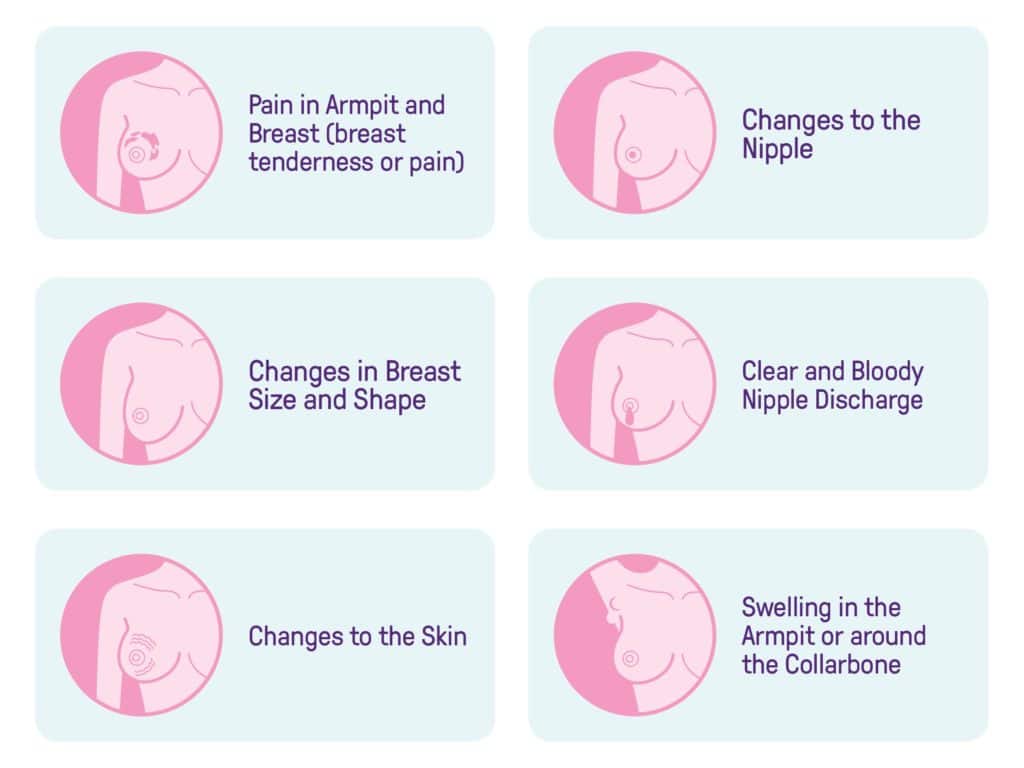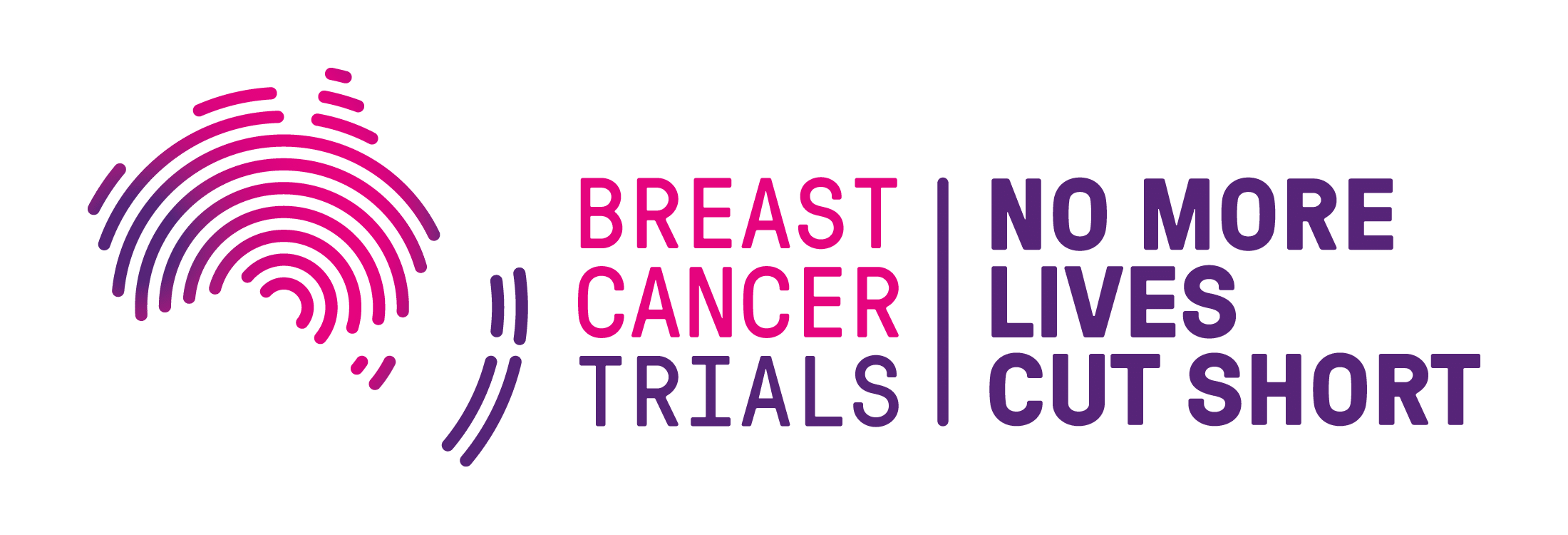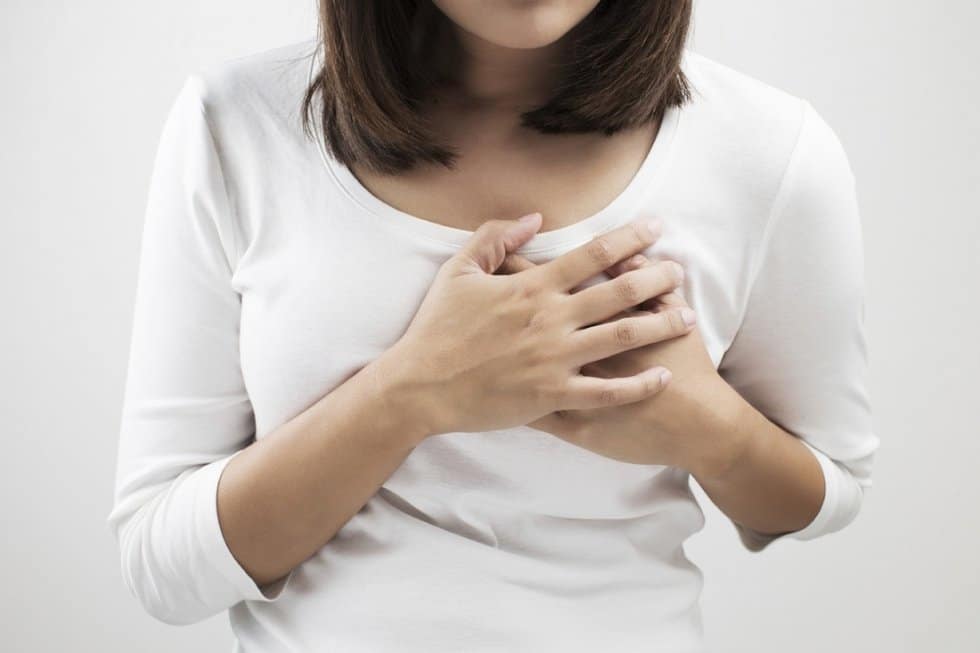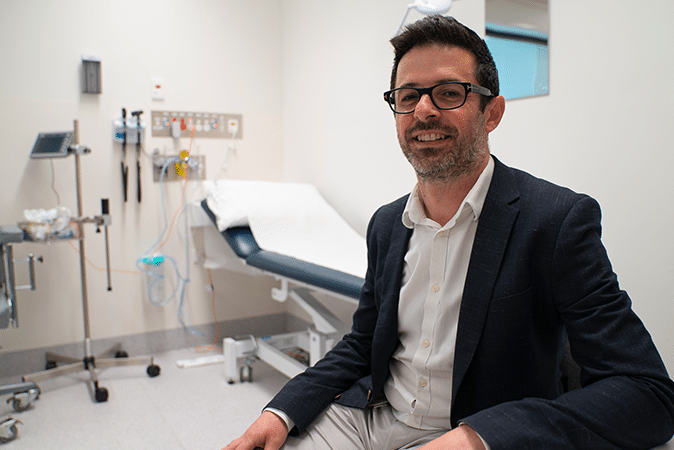What Are The Symptoms Of Breast Cancer Besides A Lump?
The most well-known symptom associated with breast cancer is finding a lump in the breast area. However, there are a number of physical signs or symptoms that could potentially indicate breast cancer. It is therefore important to be aware of the regular shape and feel of your breasts throughout the month and be aware of how your menstrual cycle can affects this. Pregnancy, weight and age can also alter the shape, feel and size of your breasts.
If you find one of the following symptoms, it’s important not to panic. Nine out of ten breast changes aren’t due to cancer. However, you should consult your doctor if you find any changes in your breasts.
It is also important to note that some breast cancers will not cause any symptoms at all. It is therefore important to get regular screening mammograms. BreastScreen Australia recommends women aged 50-74 without breast cancer symptoms should have a screening mammograms every two years. In New Zealand, women aged between 45 and 69 years are able to receive a free mammogram every two years.
Changes to Skin
Most changes to the skin of the breast are due to benign conditions, like allergies. However, changes in the look and feel of the skin of the breast, such as persistent skin redness, a rash, a scaly appearance, puckering, unusual redness or other colour changes, or dimpling (an ‘orange peel’ appearance) should be investigated further.
Changes to Breast Size and Shape
It’s quite common for your breasts to change due to hormone changes. Pregnancy can cause the breasts to increase by an average of two cup sizes, and your monthly period can also cause your breasts to change including feeling swollen, tender or lumpy before a period begins.
It’s important you are familiar with these changes. Most changes to the breast shape and size are not cancerous, however if you are concerned or have additional symptoms, speak with your doctor.
Changes to the Nipple
If there is a new change in the shape or look of your nipple, this could be a symptom of breast cancer.
A cancer may be present if there is nipple inversion – that is, the nipple is pulled in and cannot be pulled out to a normal shape, and rather than forming a slit shape the nipple is pulled in together, the nipple has any scaliness or crusting; an ulcer of sore; or unusual redness or a lump can be felt behind the nipple. However, nipple inversion may also occur naturally with increasing age.
Other physical signs or symptoms that could potentially indicate breast cancer can include pain in the armpit or breast, and nipple discharge. Find out more below.

-
Pain In Armpit and Breast (Breast Tenderness or Pain)
Breast pain is not a common symptom of breast cancer. However, if the pain is new and persistent speak with you doctor.
Most women will experience some sort of breast pain over the course of their life. Breast pain may be accompanied by tenderness, lumpiness, fullness, heaviness or an increase in breast size. The pain can also extend to the armpit.
Breast pain can occur around the menstrual cycle, increasing around 3-7 days before the period begins. It is therefore important to be aware of how your menstrual cycle affects your breasts. Women can also experience breast pain when taking hormone replacement therapy after menopause.
Other common reasons for breast and armpit pain can include stress, wearing an unsupportive bra, weight gain, injury to the breast and breast cysts or fibroadenomas.
If you are concerned about breast pain, speak with your doctor.
-
Clear and Bloody Nipple Discharge
Most nipple discharges will not be an indicator of breast cancer. However, a cancer may be present if the nipple discharge comes out without the nipple or breast being squeezed, comes from a single duct in one nipple, is blood-strained or tests positive for blood and is new, or in a woman 60 years or older.
Male Breast Cancer
For men, the most common symptom of breast cancer is a painless lump in the breast, often behind the nipple. The symptoms of male breast cancer closely resemble that of female breast cancer. If you notice a new change in your chest or nipples, talk to your doctor. If you are concerned about a change in your breasts, speak to your GP.
Breast Cancer Trials is a unique collaboration of researchers, trial participants and YOU, our valued supporters working together to save and improve the lives of every person affected by breast cancer. Help find the newest breakthrough in breast cancer research.



